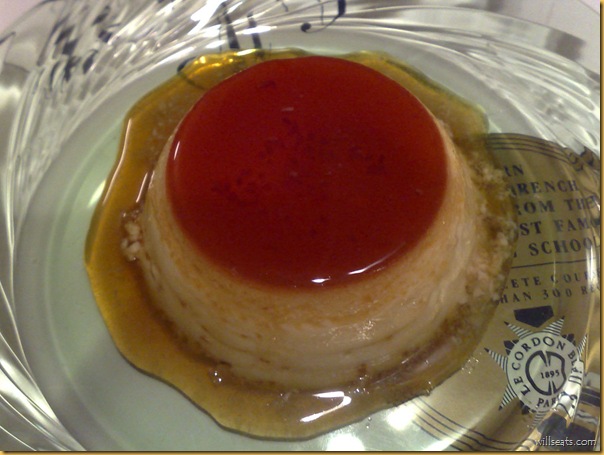Crème Caramel : Caramel Custard : LCB at Home : Lesson 2 : Part 1
This one's magic and not very difficult; which is why. no doubt, that it's such a popular dessert in restaurants. Easy for the kitchen to produce and a sort of flashy result.
You'll notice that the custard plate is sitting on the Le Cordon Bleu: At Home cookbook. I also referenced other sources for this dish and some were more "pure", using vanilla bean instead of extract; some advised straining the custard before pouring into the molds; thus, they're not identical in detailed technique or have exactly the same ingredients but all are the same in the basics and in the classic-ness of the result. That is to say... delicious.
Onwards. Read the whole recipe before starting. It's not complicated but does need to be done step by step.
What I actually did was...
Crème Renversée au Caramel : Caramel Custard
Serves: 6
Ingredients
Caramel
- 2/3 C sugar
- 1/3 C water
Custard
- 2 C milk (it was 2% - yuck)
- 2 T cream (there, that's better)
- 1 1/2 t vanilla extract
- 2 eggs
- 4 egg yolks
- 2/3 C sugar
Procedure
- Oven to 175 C [350 F]
- Have your custard cups standing by
- Have an ice bath for the saucepan on standby
- Make the caramel
- Water and sugar into a small saucepan
- Heat on low, stir more or less constantly until the sugar granules are dissolved
- Remain on low or medium-low heat until the mix starts to boil
- Crank to high, watch it boil, not stirring, not anything, until the edges of the syrup start to colour [color]
- Continue watching, nervously, as the change overcomes the syrup - it can be quick once it starts so you ought to be paying attention
- Lower to medium if you're concerned about burning it
- Give the pan a little swirl to even out the color if you feel like it
- Once it reaches a good golden brown take it off the heat and dunk the base into the ice bath to stop it cooking
- Working quickly, pour some caramel into one ramekin (custard cup), give it a swirl to cover the bottom and part way up the sides
- Do the other custard cups (ramekins) too - and quickly - this caramel sets up hard pretty fast
- Set the finished cups aside for later - it keeps for days, no problem
- Put a pot of water on to boil (you need it later)
- Make the custard
- Another, probably bigger, saucepan with the milk and vanilla
- Boil briefly and remove from the heat
- Mix the eggs together in a heatproof bowl. Don't get them foamy when mixing
- Add the sugar to the eggs, whisking/mixing gently to a nice sludgy effect
- Gradually whisk the quite warm milk into the egg/sugar mixture (again, avoid a lot of foamy action while whisking)
- Pour the resultant custard into the ramekins
- Place the ramekins in a deep, heatproof, pan - add (hot/boiling) water 2/3 the way up the sides of the cups
- On top of the stove - heat the pan to a light, slight, simmer
- Then into the oven with it for 30 minutes
- Check that the custard is "set" - slip a knife into the custard top - it must come out clean
- Wait another 10 minutes, check again
- Wait 5 more, check again
- and again - - Ah ha! They're ready!
- Remove from oven, remove from water bath, let cool - the cooked custards keep for days, no problem
- To serve
- cut completely around the edge of the mold/cup/ramekin
- place a plate over it
- flip the two
- tap the underside of the plate (gently)
- lift mold
- The caramel will magically be melted and run all over the top (the former bottom) of the custard
Done
Notes
- If the milk mixture if boiling hot going into the egg mixture you will be making sweet scrambled eggs
- The water bath (bain marie) must never have the water boiling, not even simmering hard. It messes up the texture of the custard
- Don't worry about the marks the knife makes from testing the custards for done-ness; they end up on the underside of the dish when you flip it over to serve
- The custard must be completely cooked to be able to hold its form when flipped; don't skimp on the "doneness" of this dish. Medium rare won't serve your purposes. It could take up to 45/50 minutes to cook.
- In the unlikely event that the custard fails try the recipe again- but add a 1/4 t of flour to the egg mixture (it's has to do with the protein binding of the egg or something)



1 comment:
Okay, that looks fabulous... and I think that I cold totally do it!
Post a Comment